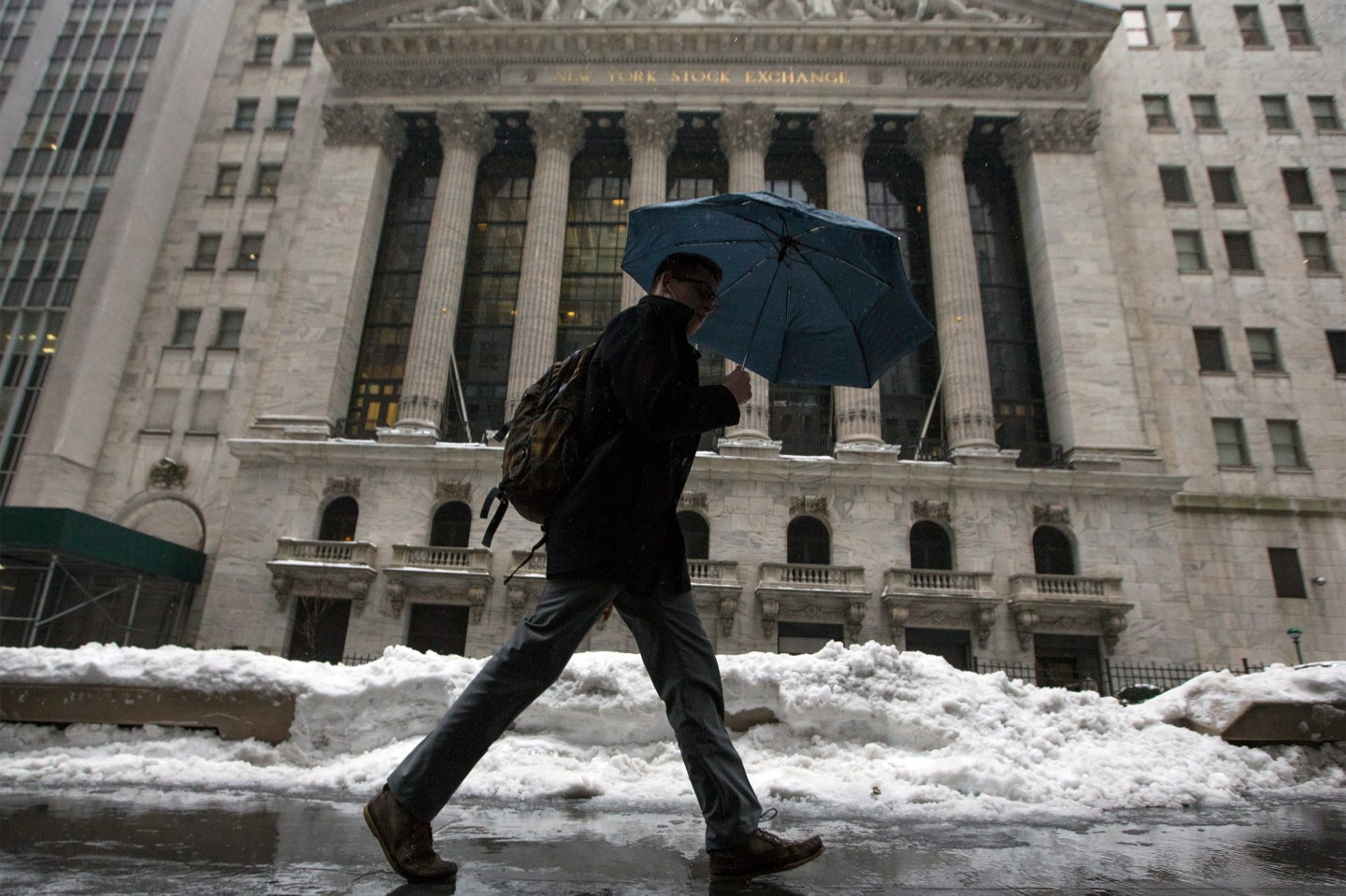The U.S. economy shrank a surprisingly sharp 2.9% in the first quarter, its worst quarterly performance since the first quarter of 2009, as the nation was battered by harsh winter weather.
Wednesday’s GDP report was the second downward revision to figures released by the Commerce Department. Initially, the government had said first-quarter GDP grew a modest 0.1%, though that figure was revised in late May to a decrease of 1%.
Another downward revision to GDP was widely anticipated by economists, which had on average anticipated real GDP to fall 1.8%, according to a poll conducted by Bloomberg. But Wednesday’s revision was far sharper than even the most bearish economists had projected, coming in at the low end of that projection anticipated 2.4% contraction.
The weak first-quarter performance has led economists and other groups, including the International Monetary Fund, to cut their 2014 growth forecasts for the United States. But many see a meaningful recovery underway since the winter weather thawed, and growth is expected to continue for the rest of the year.
Several pockets of the economy have been lauded by the Federal Reserve has performing well, including new-automobile sales, increased lending activity and generally strengthening labor conditions. Tourism is also steadily strengthening across most of the country, the Fed has said.
But other aspects of the U.S. economy could be performing better. Some post-recession trends—including long-term unemployment and low labor force participation—continue to vex policymakers. Another recent concern is higher inflation.
The Commerce Department on Wednesday separately reported new orders for U.S. manufactured durable goods in May decreased 1% to $238 billion, worse than the 0.4% growth projected by economists. The monthly decline ended a three-month streak of increases, the Commerce Department said. Meanwhile, inventories of manufactured durable goods rose 1% in May, while shipments increased 0.3%.












